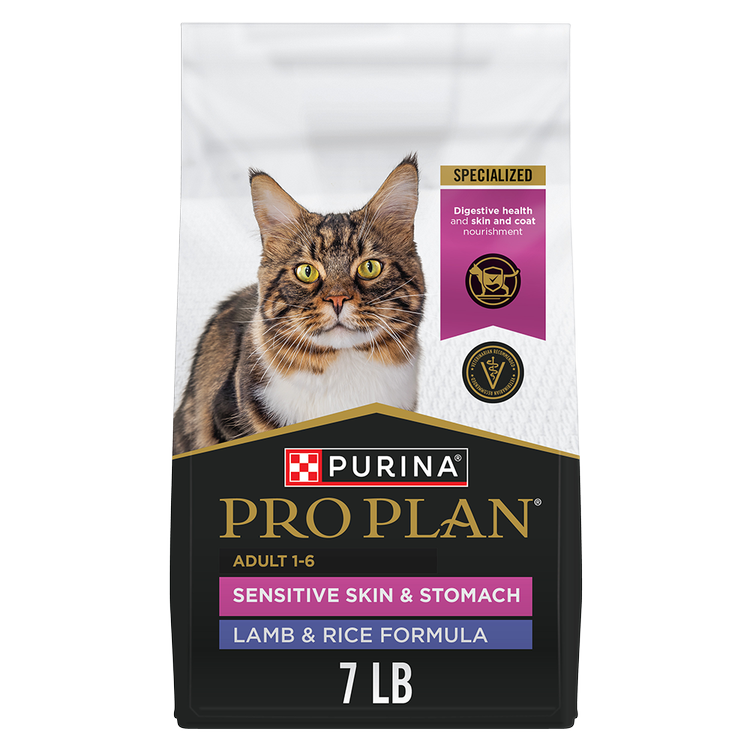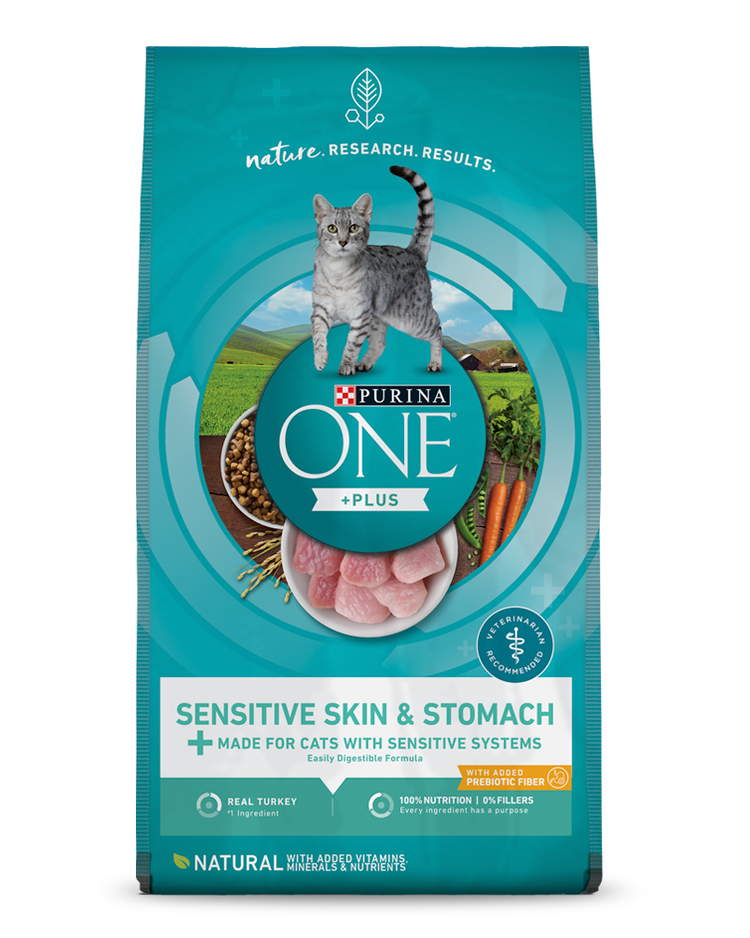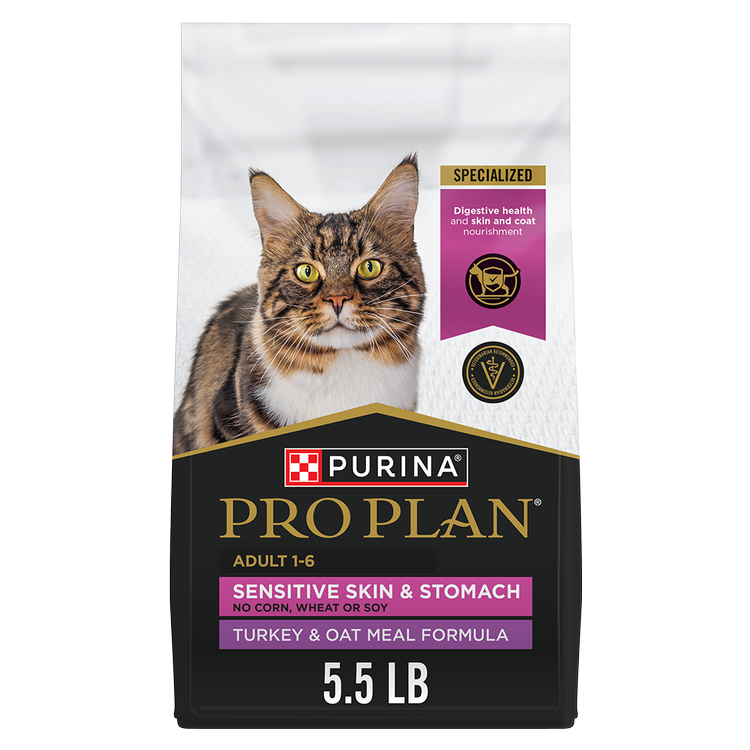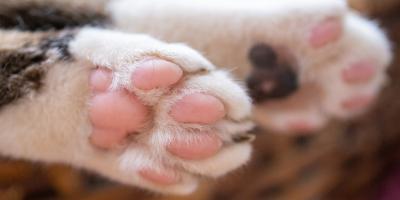Cat Rash: Common Causes, Symptoms & Treatments


The skin is your cat’s first line of defense against undesirable elements. When the skin comes in contact with irritants and allergens, a cat’s skin can become inflamed, reddened, and irritated with a cat rash or contact dermatitis. Irritants can result in direct damage to the skin while an allergen leads to a hypersensitivity or allergic response resulting in hives or urticaria.
Can cats get rashes? Although uncommon, skin rashes on cats can happen following insect bites and stings, contact with allergic or irritating substances, and even after some medications.
Cat Skin Rash Symptoms
With contact dermatitis, your cat’s skin may show signs of inflammation and redness on the thinnest part of the cat’s coat. You may notice your cat has a belly rash or ear rash. Other locations where cats get rashes are the toes, chin, anus, and mouth.
The condition is uncomfortable for your kitty, and you may notice your cat excessively licking and scratching, which can lead to a secondary bacterial infection. It’s crucial to take care of the original skin irritation before it becomes infected.
Signs your pet may be experiencing a cat skin rash or dermatitis include:
- Itching
- Scaling
- Abnormal redness
- Thickening of the skin
- Color changes (increased pigmentation)
- Oil accumulation
- Abnormal odor
- Hair loss
If the problem reaches the deeper layers of the skin, fluid discharge, pain, and sloughing of the skin can occur.
Causes of Skin Rashes in Cats
Why does your cat have a rash? There are a variety of causes for dermatitis in cats, and it can be difficult to identify the link between exposure to a substance and your cat’s skin condition.
Generally, the causes of contact dermatitis fall into two categories: irritant and allergic. In cases of irritants, when the cat encounters an irritating substance, the cat will usually exhibit an immediate response. Typical irritants include:
- Plants
- Soaps and detergents
- Fertilizers
- Mulch and cedar chips
- Cleaning products, floor waxes (especially those with citrus oil)
- Topical medications
- Road salt
- Poison Ivy
- Insecticides
- Plastic
- Perfume
- Sensitivity to sun/heat
In cases of allergic contact dermatitis, this occurs rarely in the cat and is typically caused by an insect bite or sting, or from medications. Your cat may also inhale or ingest a substance causing his or her immune system to overreact creating an allergic response. There are three main causes for cat skin allergies that may result in skin lesions:
- Flea bites and flea allergies
- Food allergies
- Environmental allergies, such as pollen, mold, and dust
Diagnosing a Cat Skin Rash
If you notice a rash on your cat’s skin, take him or her to your vet for a complete examination and diagnosis. Because many skin disorders have similar signs and symptoms, a specific diagnosis may be difficult to obtain with one visit. Your vet will most likely want to rule out a cat flea rash or other parasitic infection, such as lice or mites, with an examination and skin scrapings.
A complete history of your cat will help your vet make the proper diagnosis. Be prepared to answer questions about:
- Your cat’s activities
- How long your cat’s skin has been irritated
- Your cat’s behavior, such as licking, rubbing, scratching, or chewing of the skin
- How the problem started and how it’s progressed
- The season the problem began
- Where on your cat’s body you first noticed as issue
- Any previous treatments
- Your cat’s environment and any changes to the environment
- Any additional signs, like excessive thirst, changes in appetite and energy levels, and changes in breathing
Cat Rash Treatment
Once your vet makes a diagnosis, a treatment plan will be discussed with you. Depending on the condition, your cat’s rash treatment may include baths with medicated shampoos, oral or injected medications, and topical medications that may include antibiotics, corticosteroids, and insecticides.
Your veterinarian may recommend some of the following solutions:
- Allergy treatments. If mild skin allergies are to blame, your vet may prescribe topical treatment and possibly over-the-counter antihistamines to treat the rash and make your pet feel better. Be sure to check with your vet before giving your cat antihistamines to determine the proper type and dosage. More serious allergies might require a new diet, more extensive medication, or even allergy shots.
- Grooming. Brushing your cat can promote a healthy coat and cut down on hairballs. If your cat will tolerate a bath, bathing with special or medicated shampoos may soothe your cat’s irritated skin. Talk to your vet about what shampoos are appropriate for cats.
- Medication. Anti-itch and anti-inflammatory medications may help for serious or recurring skin rashes.
- A modified diet. If your cat experiences persistent skin problems, your vet may suggest a diet formulated to support your cat’s healthy coat to help your furry friend. Be sure to transition your cat to the new food gradually.
Treatments may entail removing your cat from his or her environment, limiting your cat’s exposure to the outdoors, or administering a patch test. In the case of suspected food allergies, your vet may recommend a new diet.
Above all, avoid treating your cat’s rash with home remedies, as you can unintentionally make it worse.
If the irritating substance cannot be identified or removed, a therapeutic treatment will likely be prescribed. This might include oral or injected corticosteroids, antihistamines, or topical medicines.
Want more cat health tips? Get advice from our experts with our other cat health articles.
Related articles

Earn myPurina Rewards with Every Purchase
Use your points for treats, toys, and gift cards with myPurina app.






